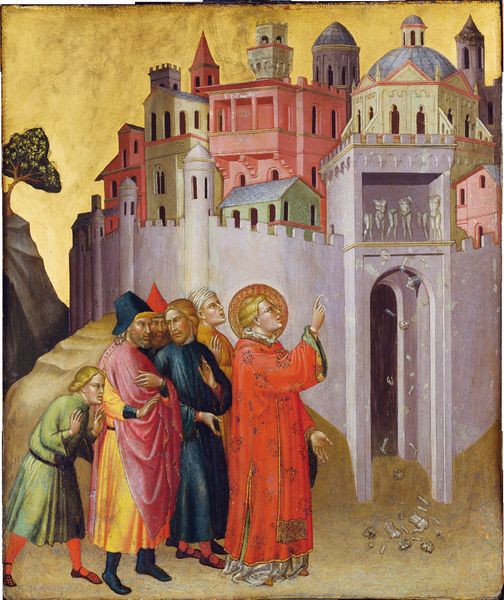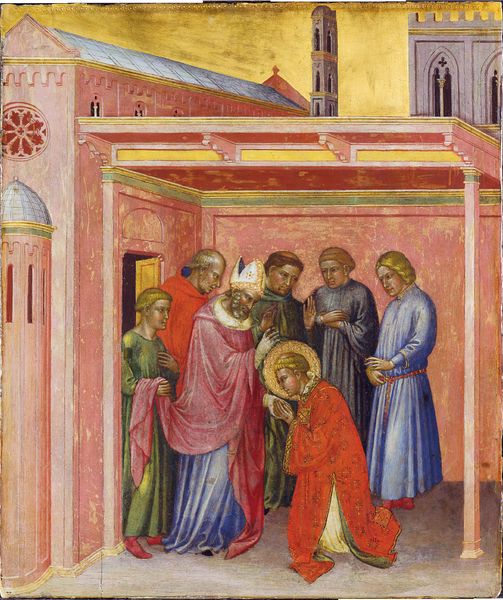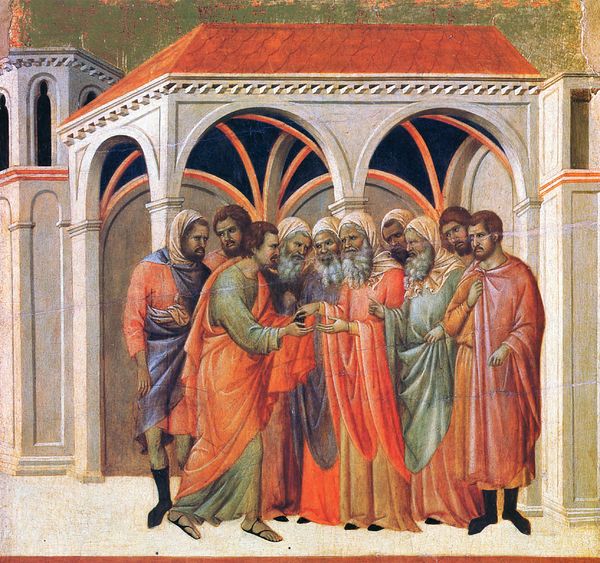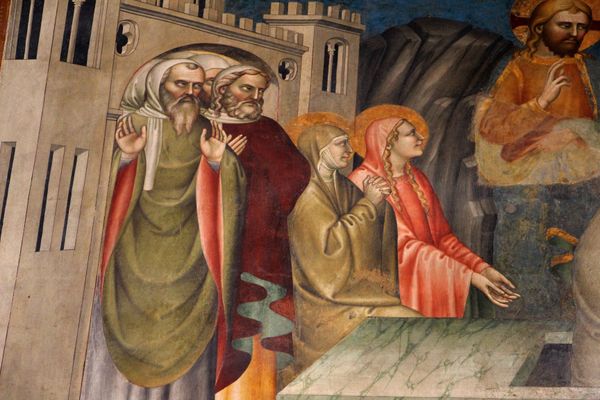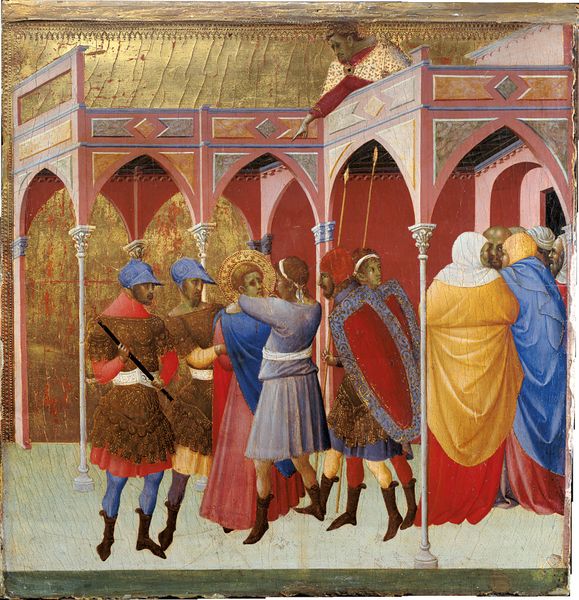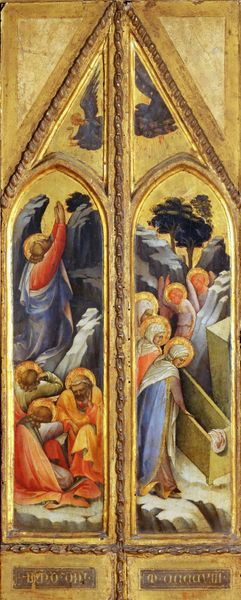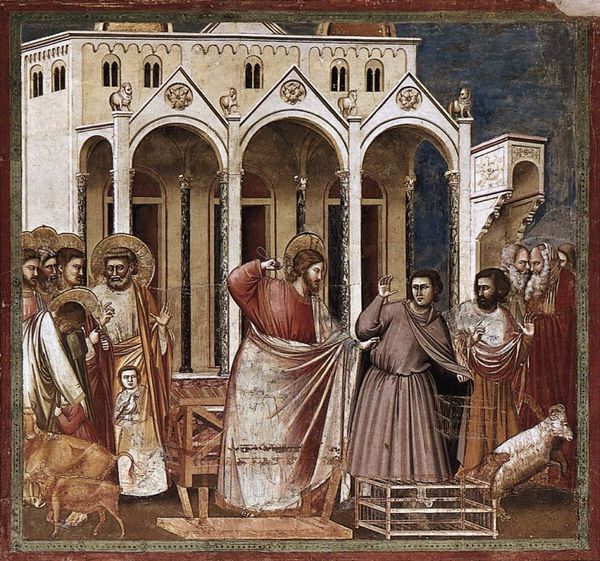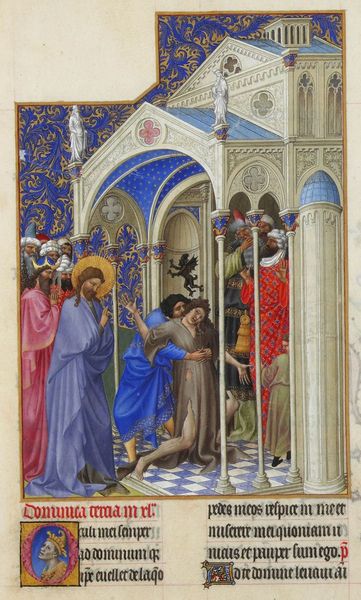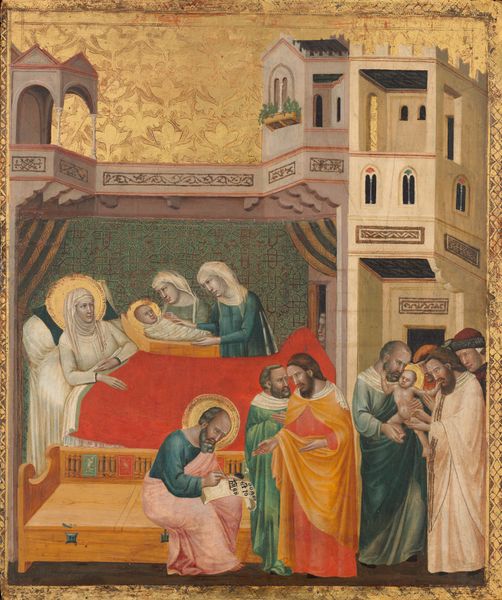
#
unusual home photography
#
animal
#
handmade artwork painting
#
oil painting
#
studio composition
#
underpainting
#
painting painterly
#
green and neutral
#
3d art
#
watercolor
#
warm toned green
Dimensions: 75.1 x 58.4 x 2.0 cm
Copyright: Public Domain
Curator: Martino di Bartolomeo painted this panel, *Bishop Julian’s Finding of the True Child*, around 1390. It's currently held at the Städel Museum. Editor: Well, my first impression is that it is oddly unsettling, this grouping of figures. The muted tones, and particularly that rather menacing devil looming above, cast a disquieting shadow. Curator: Absolutely. The composition guides the eye meticulously, from the group surrounding the bishop to the discovery itself. Note how the lines of the architecture both frame and subtly direct attention to the foreground. The flattening of space emphasizes symbolic, rather than naturalistic, concerns. Editor: Indeed. And this flattening underscores the painting’s role in conveying a didactic message, the morality tale it’s depicting. I think it shows a moment charged with moral implications, reflecting a time when the Church wielded considerable power. What do you make of this depiction of Bishop Julian's charitable act? Curator: The emotional weight, I believe, comes through the use of color. The bishop is cloaked in a reddish-purple which certainly demands our gaze, whereas the gold background seems to speak to something divine beyond the architectural structure and human forms in the space. Editor: Certainly a painting imbued with religious, perhaps even political undertones that would resonate deeply within the context of its period. It's also interesting that this scene isn’t explicitly religious but more secular or, one could say, it promotes charitable action. Curator: That brings forth a compelling detail of that era and that kind of composition—the layering of symbolic and representative spaces in two dimensions gives the overall artwork a rare balance between artifice and something very lifelike. Editor: In its careful arrangements and color choices, this painting shows us the era’s social fabric, intertwined with personal devotion and perhaps offering a glimpse of that time's complicated intersection of piety and pragmatism. Curator: Seeing it this way emphasizes, for me, just how much visual grammar can enrich the simple recounting of an already captivating and well-documented event.
Comments
Join the conversation
Join millions of artists and users on Artera today and experience the ultimate creative platform.
